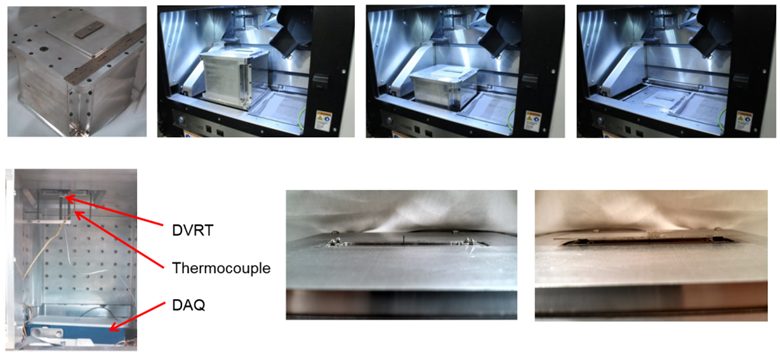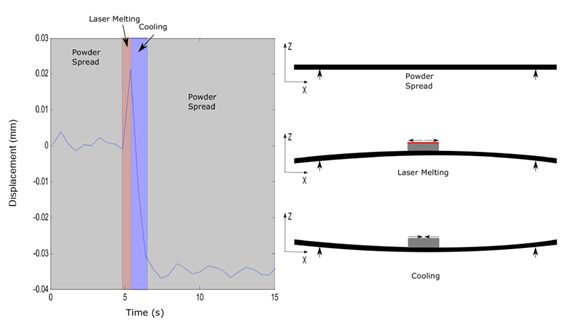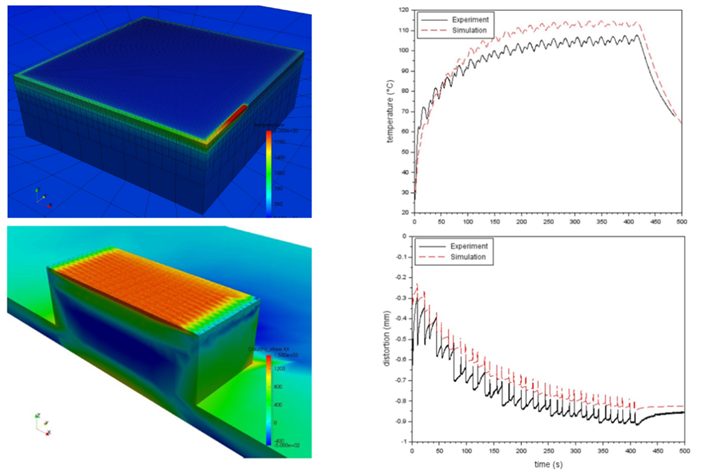Trial and error is especially costly in metal additive manufacturing. With so many variables across materials, machines, and part designs, it is almost impossible to know the formula for success.
Thermomechanical simulation, especially Netfabb’s multi-scale approach, provides a big advantage. Since 2012, over $7.3M USD has been spent validating the Netfabb Local Simulation solver predictions by comparing them with the experimental results for materials, print parameters and design cases/geometries to help customers save time and money minimizing failures with metal additive manufacturing.
Moving-Source Simulation
Description: An experimental setup was designed to allow for the measurement of in situ temperature and distortion during the Powder Bed Fusion deposition process. The measurement results were used to validate the moving-source model predictions from Netfabb Local Simulation.

Figure 1: Experimental setup used to capture the in situ temperature and distortion. A hollow aluminum box referred to as ‘the Vault’ (top left) is instrumented with a displacement sensor (DVRT) and thermocouples (bottom left). The Vault fits into the build chamber of an EOS or Renishaw printer (top right). The sensors attach to a small, 1 mm thick build plate which distorts during the build (bottom right).

Figure 2: Figure 6.2: In situ distortion measurement trend. When the heat source turns on, the top of the built plate thermally expands, resulting in an upward distortion. When the molten material cools and contracts, the top of the build plate is pulled into compression, resulting in a downward distortion.**

Figure 3: Calculated temperature and distortion compared with in situ measurements.
Conclusions:
Netfabb Local Simulation is able to accurately calculate temperature and distortion measured during the Powder Bed Fusion process. The final calculated distortion is within 5% error of the measurement.

(0)